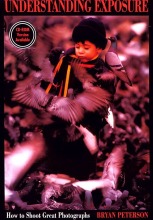Digital
101 Exposure Part 1
In
conjunction with the Nikon Talk Forum
at DP Review
Exposure...
Talking
about exposure is like climbing Mount Everest without
oxygen. Itís a subject that many photographers spend their
whole lives learning. To try to discuss it in simple terms for the
novice is a challenge. Once again the goal is to keep it simple and
provide the basic building blocks on which you can learn.
Exposure
is the amount of light that reaches the film.
This is controlled by the aperture and the shutter.
The
aperture controls the intensity of the light that reaches the film and
the shutter controls how long the light strikes the film.
Thus the relationship between the shutter and the aperture is
clear and you can see that if one increases the other must compensate.
If you think of this relationship like a scale where if everything is in
balance the two sides of the scale will be level but if you add weight
to one side and not the other it will be out of balance. This explains a
lot of how metering systems work.
To
understand exposure you first have to look at the way a camera's
metering system works. Itís a principal called 18 % reflectance. The
best way to look at this is if you take a range of color from solid
black on one end to solid white on the other a metering system will try
to read somewhere in the middle.
Thus the term middle tone. So what ever you point your camera the
metering system will try to find the middle ground on which to base its
exposure.
The
basic camera looks at the whole picture area and tries to set an
exposure that will average every color in the viewfinder and make the
best, averaged exposure. Thatís why you have heard of the gray card.
The gray card has a gray color that is considered to be middle tone or
more importantly 18% reflectance. If in doubt meter off the gray card
and set that exposure manually in your camera.
With
a digital camera you have many advantages over film and exposure is one
of them. There is an article in this months Popular Photography about
using a digital camera for an exposure meter. With a film camera with
the best exposure meter you still canít see the exposure until
processed. With digital thatís not true and we see what we get now. So
with a digital you can shoot till you get it right.
The
basic metering system will give you good images about 80% of the time.
The other 20 % will be affected by backlighting, light against dark,
dark against light, pictures around the water or snow or really
Difficult images like a dark colored squirrel in the snow that has
strong backlighting by the sun.
We
will look a many different examples these next two weeks of exposures
and how to achieve results. Yes I said two weeks. We cannot go thru this
subject quickly as it is the foundation of every image you will ever
take. I will try to post a
new subject on exposure every two days and leave time in between to
discuss and show examples. As always have fun and if we learn a little
in the process then great. Wednesday we will discuss the different
features of the cameras metering system and how to use them.
Troutman
Click
here to discuss this tutorial on the Nikon Talk Forum at DPReview...
[ Next ]
>>
|
For
further reading...
Take a look at "Understanding
Exposure"
by Bryan Peterson.
 |
 |
| Front
Cover |
Back
Cover |
"If
you're someone who finds the concept of exposure overwhelming
and confusing, then Understanding Exposure is the book you've
been waiting for. Professional photographer Bryan Peterson
demystifies this complex subject, making it easy to grasp."
(taken from the back cover)
This
144 page book also includes more than 100 side-by-side
comparison pictures.
Click
here for more details and to purchse
|
